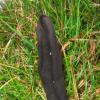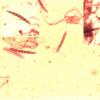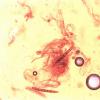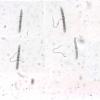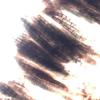
21-12-2025 09:32
Hello.A tiny ascomycete found embedded in wood in

21-12-2025 21:32
Pol DebaenstHello, Garden, Burgweg 19, Veurne, BelgiumOn 10/1

22-12-2025 23:38
Patrice TANCHAUDBonsoir, récolte sur un mur en pierre, apothéci

22-12-2025 00:47
Patrice TANCHAUDBonsoir, récolte à proximité du milieu dunaire

21-12-2025 21:40
Isabelle CharissouBonjour, j'aimerais connaitre les références de

20-12-2025 23:08
Patrice TANCHAUDBonsoir, récolte sur sol sablonneux dans l'arri�
Is this G umbratile.
Thanks
Mal

Zotto

Mal

Hi Malcolm, Zotto:
The morphology of the spores (guttules) and paraphyses is not G. fallax.
The stipe looks smooth, fit into our concept of G. umbratile.
Best regards.
Sabino Arauzo.

And yes indeed, in G. fallax I saw the spores with large drops with some small around, but here they are multiguttulate.
In your work, Sabino, G. nigritum and G. umbratile, are synonyms, and you figured a multiguttulate spore. But my cf. umbratile HB6543 has gutules like fallax and also hyaline spores inside the asci. I compared it otherwise with G. (Hemileucoglossum) elongatum.
Zotto
Hi Zotto:
I have not seen amorphous brown material in paraphyses of G umbratile or closest species. H. elongatum has ephitecium and stipe hairy.
I think that HB6543 belongs to G. fallax - starbaeckii group.
Sabino.

I only wonder why in my HB 1217 no exudate is shown, perhaps I overlooked.
Zotto
